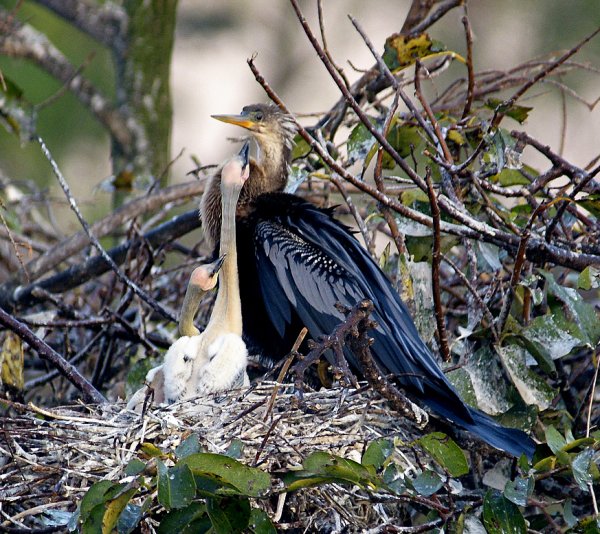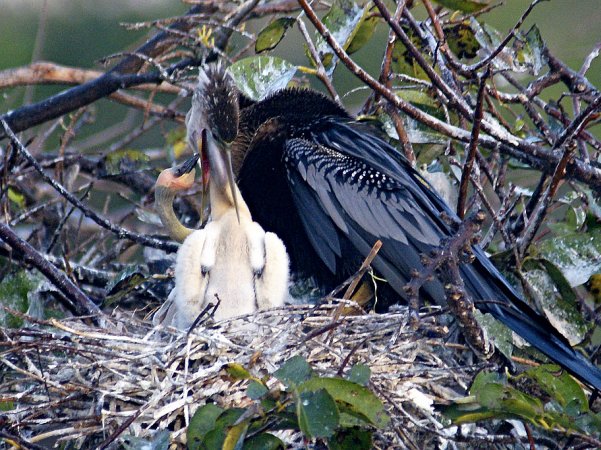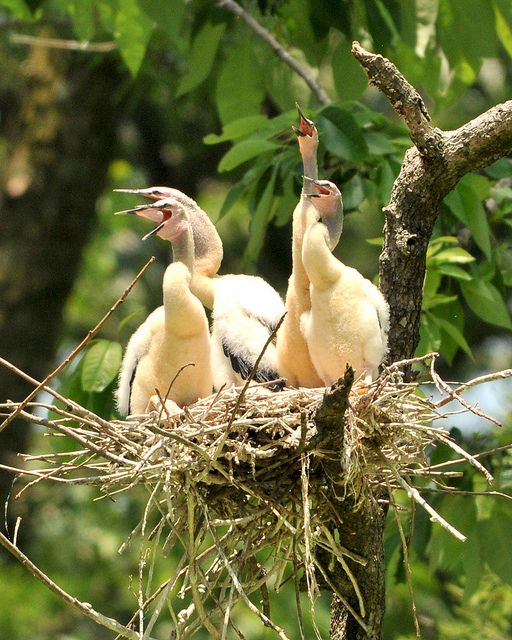
Last Sunday at Wakodahatchee Wetlands I was pleased to see anhinga nestlings up close even though the small ones are rather ugly.
Anhingas (Anhinga anhinga) nest colonially in woody shrubs above water during south Florida’s dry season (November to May) because low water levels concentrate the fish and make them easier to catch.
Newly hatched anhingas are pale, naked and reptile-like though their eyes are open*. The females lay eggs up to four days apart and begin incubation immediately so the young in recently hatched nests range in size and appearance from small naked hatchlings to large downy first-born.
The nestlings beg with their mouths closed and their gular pouches extended (the skin beneath their beaks), asking their parents to dole out food by regurgitation.
Below, an older nestling has his head inside his mother’s mouth to get food from her gular pouch while the younger one on the left looks angular because he’s begging with extended gular skin. His throat looks bigger than the top of his head!

Eventually the youngest catch up to the oldest … still with faces that only a mother (and father) could love.

(photos by shell game and Jimmy Smith via Flickr, Creative Commons Atrribution Share-Alike Non-Commercial License)
Aww, they aren’t ugly, they’re cute! with their fuzzy wings and long necks. If you want ugly, pigeon chicks are ugly. My daughter found a nest of them in a truck that hadn’t been used for a while on the military base where she was attending training.
baby barn owls start out a little scary looking too! 🙂
Kate I love anhingas! The first one I saw was swimming in a lake, with only its long snaky neck and head showing. I was entranced! They are Florida to me, especially when they unfold their wings to dry from branches, or next to an alligator on a safe lakeside. They look like old crones hanging out their old black rags.
Hmm? Maybe not the image Florida wants to foster?
Anne